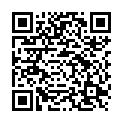|
|
|
| Module code: BIBA211 |
|
|
4VU (4 hours per week) |
|
4 |
| Semester: 2 |
| Mandatory course: yes |
Language of instruction:
German |
Assessment:
Written exam
[updated 28.09.2020]
|
BIBA211 (P110-0026) Civil and structural engineering, Bachelor, ASPO 01.10.2011
, semester 2, mandatory course
BIBA211 (P110-0026) Civil and structural engineering, Bachelor, ASPO 01.10.2017
, semester 2, mandatory course
|
60 class hours (= 45 clock hours) over a 15-week period.
The total student study time is 120 hours (equivalent to 4 ECTS credits).
There are therefore 75 hours available for class preparation and follow-up work and exam preparation.
|
Recommended prerequisites (modules):
BIBA120 Structural Design I
[updated 17.01.2017]
|
Recommended as prerequisite for:
BIBA652 Building Physics - Practical Applications
[updated 17.01.2017]
|
Module coordinator:
Prof. Dr.-Ing. Gudrun Djouahra |
Lecturer:
Prof. Dr.-Ing. Gudrun Djouahra (lecture)
M.Eng. Arch. AKS Georg Müller
[updated 17.01.2017]
|
Learning outcomes:
Structural Design:
After successfully completing this module, students will be able to draw structural details.
- They will have basic knowledge about the design, manufacture and assembly of building elements and structures including the integration of the technical structure.
- They will be familiar with the application and use of building materials and building products.
- They will be familiar with the functional requirements for components and buildings such as moisture protection, thermal insulation, sound insulation and fire protection and their structural implementation.
- They will be able to apply building regulations, especially safety regulations and standards.
Structural Physics:
-Students will have acquired knowledge about and understand processes in structural physics (heat, moisture and sound).
-They will be able to use their knowledge of structural physics for structural designs.
-They will be able to independently develop and apply subject-related content.
[updated 28.09.2020]
|
Module content:
Structural Design:
-Ceilings, stairs
-Roofs, pitched / flat
-Facades
-Windows, doors and their connecting points
Structural Physics:
-Heat: Energy, heat transmission, temperature profile, ventilation
-Energy Saving Ordinance (Energieeinsparverordnung EnEV), summer heat protection, thermal bridges
-Moisture: Basics, water vapor diffusion, practical moisture protection
-Sound: Sound insulation terminology, practical sound insulation
[updated 28.09.2020]
|
Recommended or required reading:
Structural Design:
_ Frick, Knöll: Baukonstruktionslehre Teil 1 und Teil 2
_ Beinhauer Peter: Standard-Detailsystem
_ Bantan B., Köhler K. Zwanzig J. u.a.: Bauzeichnen, Verlag Holland + Josenhans
_ Holschemacher K.: Entwurfs- und Konstruktionstafeln für Architekten, Bauwerk Beuth Verlag
Structural Physics:
_ Djouahra, G.: Bauphysik: Lecture Notes
_ Duzia, T.; Bogusch N.: Basiswissen Bauphysik: Grundlagen des Wärme- und Feuchteschutzes, Fraunhofer IRB Verlag
_ Liersch K., Langner N.: Bauphysik kompakt: Wärme-Feuchte-Schall, Bauwerk BBB Beuth-Verlag
_ Lübbe E.: Klausurtraining Bauphysik, Vieweg+Teubner Verlag
_ Ziegelindustrie e.V.: EnEV, Energie-Einsparverordnung, Leitfaden für Wohngebäude
[updated 28.09.2020]
|


